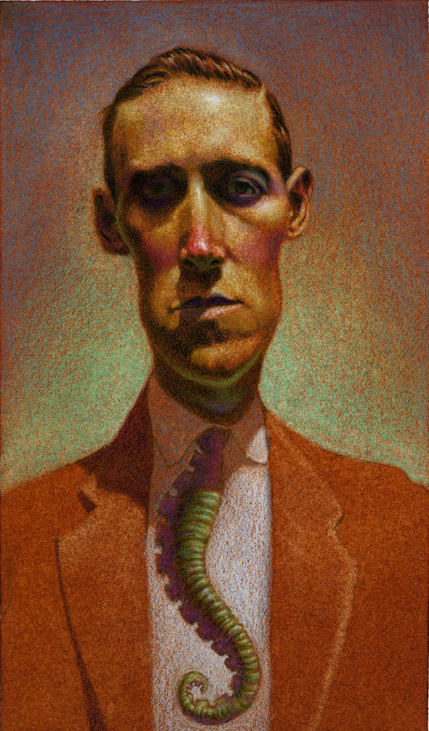It doesn’t take looking at too many portfolios before you realize artists love tackling Cthulhu’s tentacled madness. Back in 2009, being then a newbie to the Old Ones, I asked a bunch of artist friends: Just what is it about Cthulhu and Co. that makes drawing, painting, and sculpting from Lovecraft so much…fun? (If fun is the right world?)
On today, H. P. Lovecraft’s 122nd birthday, hear what Michael Whelan, John Jude Palencar, Mike Mignola, Bob Eggleton, and others have to say on the topic. And then add your own! Post any Lovecraftian or tentaclian inspired art (doodles by non artists count, maybe even more so) in the comment section—horrify your friends, worry your love ones….
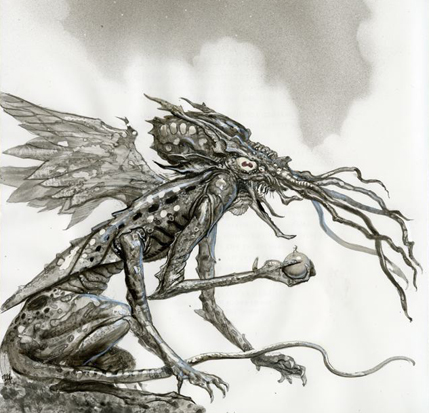
Michael Whelan: Yes, I was your typical disaffected American youngster, born in the 50s and living the bland suburban lifestyle in California. But as soon as I began to read HPL it all became clear, my destiny unfurled before my eyes. My parents may have protested otherwise, but I know my REAL parents were of the Elder Gods, lurking in the dark, hideous yet powerful beyond all human comprehension, waiting patiently for blasphemous dark rites to loose them upon the Earth again. And I—yes I!—could perhaps be the one to paint the passage enabling their frightful return to power! So I became one of the elect, a set of acolytes dedicated to limning the shapes of nightmare, laboring by night and day to realize the key to the doorways between dimensions. Ah, the pits of Nyarlathotep! The dark labyrinths of R’yleh! The monstrous three-lobed eye!
Maybe I’ll get to that tomorrow. First, however, I have this deadline to meet….
![]()
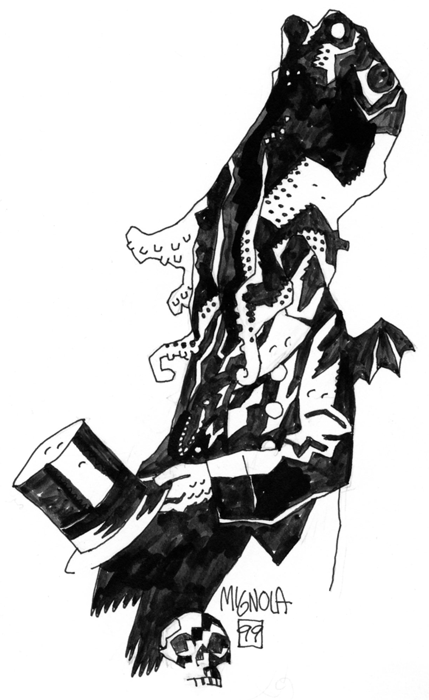
Mike Mignola: The appeal of drawing Lovecraft creatures? Some of them are beyond human comprehension—that’s always a challenge. Other, the one he really gets in there and describes the hell out of (like those barrel-shaped guys with little wings and wiggly eyes on stalks in Mountains of Madness)—well, they sound kind of silly. It’s fun to see if you can make something like that look scary.
![]()
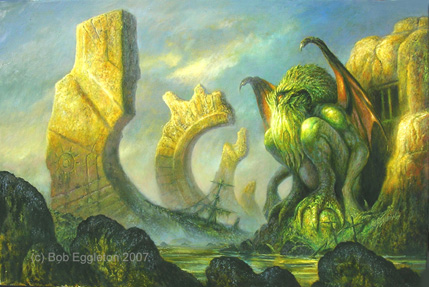
Bob Eggleton: I think what I love about Lovecraft is the weird, dark, modern mythology, if you will. Living around Providence inspires it no end; after all, he lived here. What’s odd is that not many Rhode Islanders know or care about that. The fame seems external, from elsewhere in the world. Lovecraft successfully combines a gothic horror with a dash of science fiction in a way that really hasn’t been done since. It’s inspired, but not…repeated. His dark elder gods are truly frightening visages. Of course, the most famous is Cthulhu, which I have depicted here in a painting that took some inspiration from Arnold Bocklin’s “Isle of The Dead” series of paintings. My plan is to do much more in the way of Lovecraftian images and I was very happy to be part of the Centipede Press book The Art of H. P. Lovecraft published in 2008.
![]()
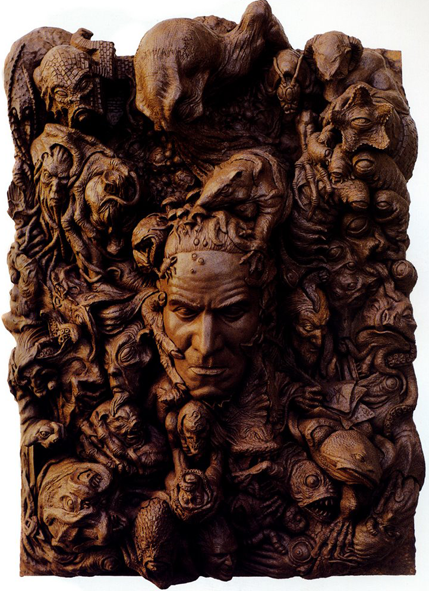
Joel Harlow: The works of H.P. Lovecraft have influenced my art, dating back to my youth. My father and I would haunt the used bookstores of Denver. Me, searching for anything by Lovecraft. To this day, the musty smell of used books conjures up images of unseen horrors.
It is this concept that truly inspires me. That there are beings whose mere appearance is enough to dissolve the sanity and reason of the observer. To try and capture that in two or three dimensions will always be the elusive goal.
![]()
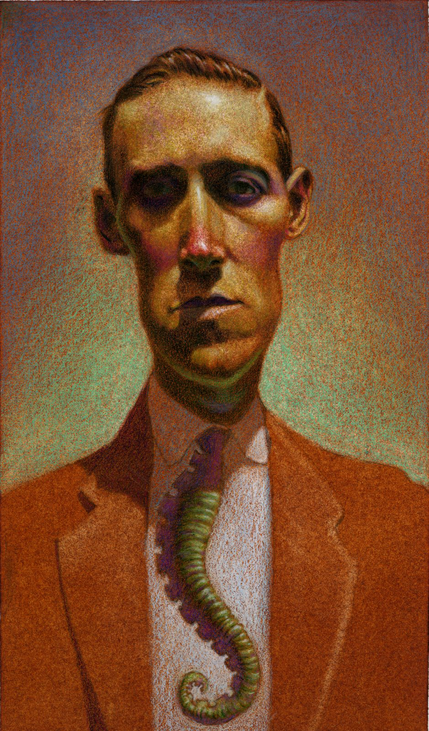
Matt Buck: The thing that draws me to Lovecraft the most is the scale and range of his vision. Nobody does terror on a cosmic level like Lovecraft did. Reading his stories made me feel like the most minute, insignificant, pathetic speck of dust in the scope of all of the monsters inhabiting his universe and trying to claw their way into our consciousness. He also had the ability to make the other end of the spectrum just as frightening by injecting horror into even the most mundane of things. Normally something like a smell isn’t particularly scary, but the way he described a simple odor left me thinking two things. First: Damn, that’s scary. And second: How the hell did he just make me afraid of a smell?!
The level of detail he put into his stories left me, as well as many others, feeling that the poor fellow might have actually believed in his monsters (although his letters do indicate otherwise). I like to think that he didn’t make any of his tales up, but was actually unfortunate enough to have been the only person who could see the things he wrote about. I tried to get across that certain “touched in the head” quality in my portrait of good ol’ H.P.
![]()
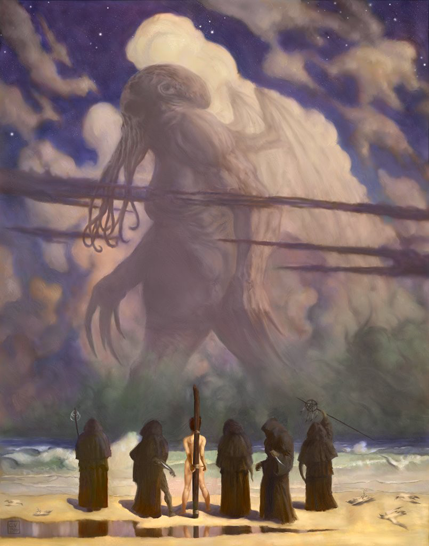
Cyril van der Haegen: The fact that he created his amazingly scary world in the beginning of the 20th century, when Poe was deemed “horror” and people fainted at the sight of a mouse… He invented a truly new genre of psychological horror that was unheard of at the time, yet remained ingrained in the social psyche and is still being copied in numerous media forms today: The horror that cannot be understood nor explained is such a great concept.
Also, the fact that I live in Providence myself: It certainly is true that the Old Ones have descendants in the area.
![]()
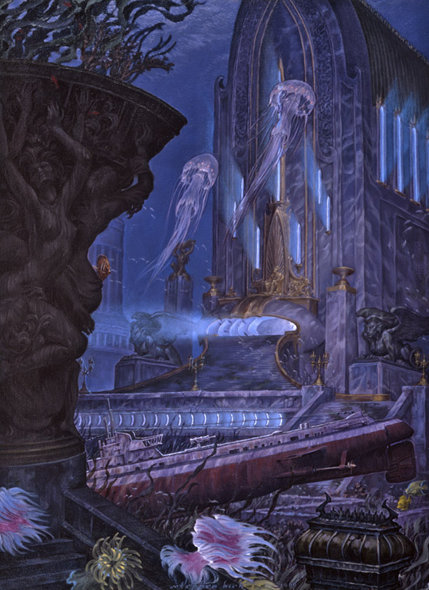
Stephen Hickman: I like to try and illustrate Lovecraft because of a perverse streak in my psyche that seems to be attracted to things that are virtually impossible to do. And illustrating Lovecraft is the next best thing to impossible—like the late Roy G. Krenkle used to observe, the most interesting characters in Lovecraft’s stories are invisible and smell bad. Apart from the fact that you can pan the Lovecraft Mythos for occasional literal scenes, like my painting from The Temple [seen above], Lovecraft is best approached from the “illustrate the metaphor” angle. The two sculptures I did with Bowen Designs are an interesting way to do the whole Mythos at once, a delightful aspect I discovered by accident. And basically, Lovecraft’s stories are so charmingly quirky that, even apart from the challenge they represent, they are difficult to resist.
![]()
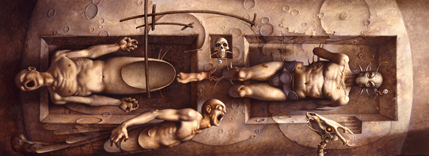
John Jude Palencar: I’ve always thought of H.P. Lovecraft as a bridge between Hawthorne and Poe in the past, and King, Barker and others in the present day. Although, there are no trolls under this “bridge”… rather a malevolent twittering presence that is waiting for the unsuspecting traveler crossing it.
![]()
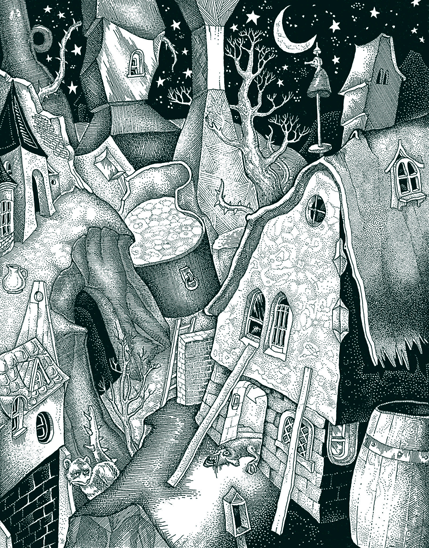
Jason Van Hollander: Piranesi and Lovecraft were poets of architectural decay. They were preoccupied with the alchemies and poetries of time. HPL’s depictions of rotting New England villages, misshapen streets, grotesquely formed dwellings reveal his particular dilemma: These cruel and contorted geometries are indistinguishable from the emotional disfigurements of the author. Architectural fantasias, poetically or artistically expressed, are a metaphor for a sense of deranged interiority…a dilemma that I thoroughly understand.
![]()
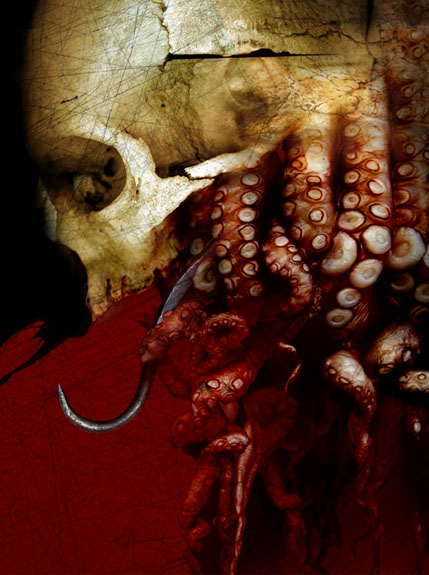
Viktor Koen: Just the other week a colleague warned me not to create any pictures that include creatures with tentacles, since everybody and their mother are doing it this year (like antlers last year and bird legs the year before) but I couldn’t resist.
How I found myself devouring the pages of an H.P. Lovecraft short stories book, I don’t remember, but this is when Cthulhu entered my head. From attempting to pronounce the monster’s name out loud until I get it right (I still don’t know for sure) to obsessively photographing octopi hanging to dry in the Greek islands, I can see the effect the beast can have on a poor soul, including mine. I find Lovecraft’s ability to describe the effects his creatures have on people and their surroundings, breathtaking, not only because he has a way with words, but mostly, because he knows what to leave blurry, mysterious and open to interpretation. This diabolical ambiguity in his story telling reminded me of the way Jorge Luis Borges activated my imagination. Two years ago I asked my students at the Masters of Illustration as Visual Essay at the School of Visual Arts to wrestle with Cthulhu for an entire semester, now it was my turn.
![]()
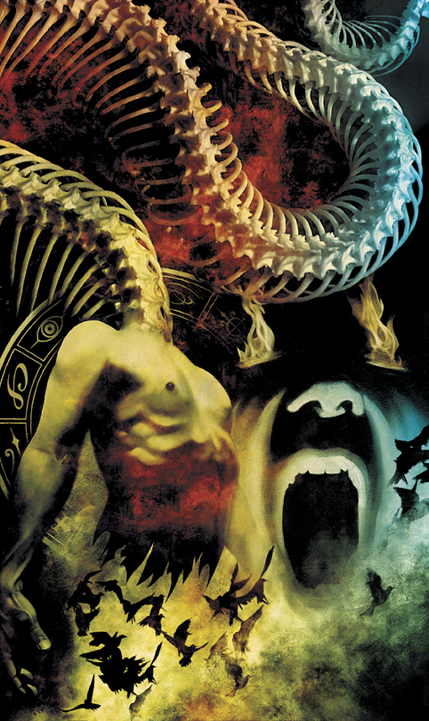
John Picacio: I’m curious how much or how little it takes to make a great Lovecraftian image. Some of my favorites by other artists are ridiculously over-the-top, while others are potent because they show just the right bits and allow the audience’s imagination to create the fear. The more I work in this field, the more I realize just how much contemporary dark fantasy and horror art is influenced by Lovecraft. Those tentacle roots run very, very deep.
![]()
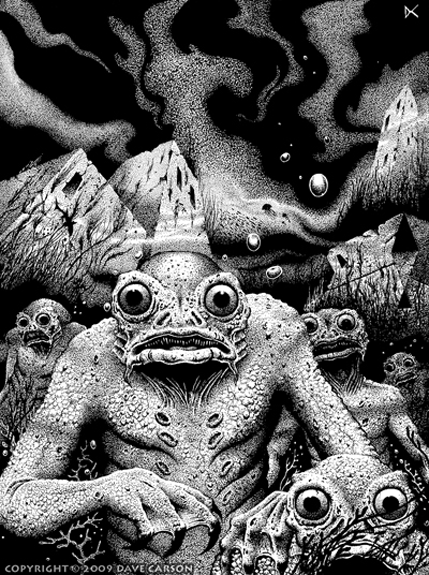
Dave Carson: Being an artist with a love of both the macabre and H.P. Lovecraft’s tales I suppose that I would have to be some kind of daemon swineherd not to want to illustrate his work. Surely only a hopelessly degenerate artisan could fail to find inspiration in those wonderful nightmare-spawned tales? And such inspiration! There’s batrachian loathsomeness, squamous blasphemy, leprous hideousness, fungoid unholiness, and eldritch horror. There’s Cyclopean cities, decaying seaports and yawning mould-caked tombs. And then there are the wings, and worse than wings….
H.P.Lovecraft’s stories have been on my bookshelf since I was around nine years old. I am now fifty five years old and have never tired of them, and I always find something in them that makes me want to put pen to paper.
![]()
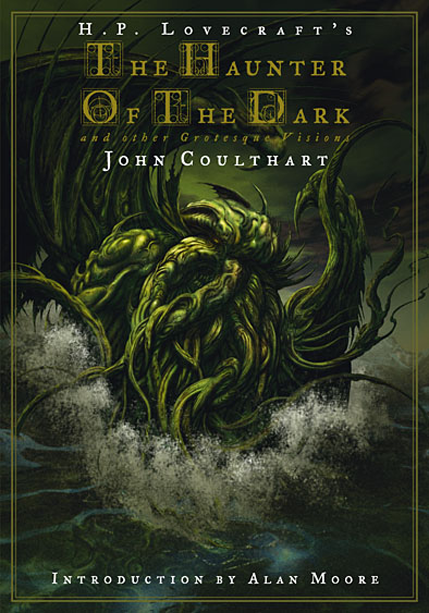
John Coulthart: When I was 15 it was the incredible density of atmosphere, the peculiar diction—Cyclopean, non-Euclidean, eldritch—which made pictures in my head. I wanted to try and fix those pictures on paper. When I was 25 it was realising that this was visionary work, cosmic in scale and sublime in the Romantic sense. Old Howard: He’s the boss.
![]()
Okay artsy peoples — anyone out there willing to share? Below you’ll see the additions from when this article originally appeared in 2009. Feel free to add your own images of slimy tentacle bits in the comments below, be they pro, fan, or post-it note doodles.
Irene Gallo is the Art Director for Tor Books.










